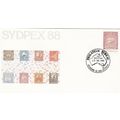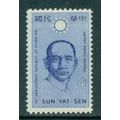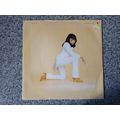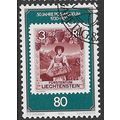Coniston Water, Cumbria - 'Gondola' streamer - classic John Hinde card (2LD131)
- Condition : Used
- Dispatch : 2 Days
- Brand : None
- ID# : 182696128
- Quantity : 1 item
- Views : 169
- Location : United Kingdom

- Seller : justthebook (+1703)
- Barcode : None
- Start : Thu 20 Jun 2019 17:46:39 (EDT)
- Close : Run Until Sold
- Remain : Run Until Sold
Checks/Cheques
 for 1 item(s) edit
for 1 item(s) edit
Shipping Calculator
More Listings from This Seller view all
Seller's Description
- Postcard
- Picture / Image: 'Gondola' on Coniston Water, The Lake District
- Publisher: John Hinde (2LD 131) / photo E. A. Bowness
- Postally used: no - long message but not posted
- Stamp: n/a
- Postmark(s): n/a
- Sent to: n/a
- Notes / condition:
Note on John Hinde:
John Hinde was an English photographer who set up John Hinde Ltd in Dublin, Ireland in the early 1960s. He produced most of the earlier cards himself before employing other photogaphers such as E.Nägele, E. Ludwig, D. Noble and other names who spent a long time getting just the right view, usually with people in the foreground. The prints were then artistically hand processed and manipulated in Italy (long before digital production) before being published. His company was also closely associated with Butlins and they produced many of their cards. The company’s cards have become popular with collectors in recent years due to exhibitions and being featured in books, particularly by photographer and postcard collector Martin Parr. They were influential in the development of commercial photography and postcard images and now are regarded as miniature works of art and social records in themselves, particularly those of the 1960s and 1970s.
Please ask if you need any other information and I will do the best I can to answer.
Image may be low res for illustrative purposes - if you need a higher definition image then please contact me and I may be able to send one. No cards have been trimmed (unless stated).
------------------------------------------------
Postage & Packing:
Postage and packing charge should be showing for your location (contact if not sure).
No additional charges for more than one postcard. You can buy as many postcards from me as you like and you will just pay the fee above once. Please wait for combined invoice. (If buying postcards with other things such as books, please contact or wait for invoice before paying).
Payment Methods:
UK - PayPal, Cheque (from UK bank) or postal order
Outside UK: PayPal ONLY (unless otherwise stated) please. NO non-UK currency checks or money orders (sorry).
NOTE: All postcards are sent in brand new stiffened envelopes which I have bought for the task. These are specially made to protect postcards and you may be able to re-use them. In addition there are other costs to sending so the above charge is not just for the stamp!
I will give a full refund if you are not fully satisfied with the postcard.
----------------------------------------------
Text from the free encyclopedia WIKIPEDIA may appear below to give a little background information (internal links may not work) :
*************
Coniston Water in Cumbria, England is the third largest lake in the English Lake District.[1] It is five miles (8 km) long, half a mile (800 m) wide, has a maximum depth of 184 feet (56 m), and covers an area of 1.89 square miles (4.9 km2). The lake has an elevation of 143 feet (44 m) above sea level. It drains to the sea via the River Crake.
Coniston Water is situated within the boundaries of the historic county of Lancashire. Today Coniston Water forms part of the administrative county of Cumbria.
Coniston Water is an example of a ribbon lake formed by glaciation. The lake sits in a deep U-shaped glaciated valley scoured by a glacier in the surrounding volcanic and limestone rocks during the last ice age.
To the north-west of the lake rises the Old Man of Coniston, the highest fell in the Coniston Fells group.
" 'The king's estate or village'. The 2nd el.[ement] is OE tūn, and the whole name may, like numerous English Kingstons, be from OE 'cyninges-tūn'. ... Scand[inavian] influence is, meanwhile, shown by the '-o-' of early and modern spellings, and Ekwall[2] speculated that this could have been the centre of a 'small Scandinavian mountain kingdom' ".[3] Plus "OE 'wæter', with the meaning probably influenced by its ON relative 'vatn'." [4] (OE=Old English; ON=Old Norse).
Remains of agricultural settlements from the Bronze Age have been found near the shores of Coniston Water. The Romans mined copper from the fells above the lake, and a potash kiln and two iron bloomeries show that industrial activity continued in medieval times. In the 13th and 14th centuries, Coniston Water was an important source of fish for the monks of Furness Abbeywho owned the lake and much of the surrounding land. Copper mining continued in the area until the 19th century.
The lake was formerly known as "Thurston Water", a name derived from the Old Norse personal name 'Thursteinn' + Old English 'waeter'.[5] This name was used as an alternative to Coniston Water until the late 18th century.[6]
The Victorian artist and philosopher John Ruskin owned Brantwood House on the eastern shore of the lake, and lived in it from 1872 until his death in 1900. Ruskin is buried in the churchyard in the village of Coniston, at the northern end of the lake. His secretary the antiquarian W. G. Collingwood wrote a historical novel Thorstein of the Mere about the Northmen who settled on the island in the lake.
Arthur Ransome set his children's novel Swallows and Amazons and the sequels Swallowdale, Winter Holiday, Pigeon Post and The Picts and the Martyrs around a fictional lake derived from a combination of Coniston Water and Windermere. The fictional lake resembles Windermere, but the surrounding hills and fells resemble those of Coniston Water. Some of Coniston Water's islands and other local landmarks can be identified in the novels. In particular the books' Wild Cat Island with its secret harbour is based on Peel Island. The Swallows and Amazons series involve school holiday adventures in the 1930s.
Historically, Coniston was part of Lancashire (North of the Sands), until Local Government reorganisation in 1974 when Cumbria was created.
Listing Information
| Listing Type | Gallery Listing |
| Listing ID# | 182696128 |
| Start Time | Thu 20 Jun 2019 17:46:39 (EDT) |
| Close Time | Run Until Sold |
| Starting Bid | Fixed Price (no bidding) |
| Item Condition | Used |
| Bids | 0 |
| Views | 169 |
| Dispatch Time | 2 Days |
| Quantity | 1 |
| Location | United Kingdom |
| Auto Extend | No |





















